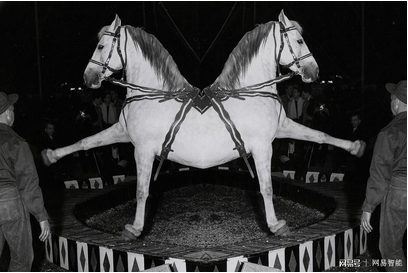
Hey, AI, what do you think you are looking at? Why do machines with learning algorithms be deceived to recognize something that doesn't exist? This is becoming more and more important as products such as driverless cars appear. Now, we can get a glimpse of the machine's brain through a test that lets people know which parts of an image an artificial intelligence is looking at.
Artificial intelligence is completely different from humans. Chris Grimm of Brown University in Rhode Island said that even the best image recognition algorithms would be tricked, such as identifying white noise images as robins or cheetahs, which is a big problem. He said that if we don't understand why these systems make stupid mistakes, then when we deliver our lives to artificial intelligence, we should think twice before, such as carefully considering whether to develop a driverless car.
Therefore, Grimm and his colleagues created a system to analyze an artificial intelligence to monitor which part of the image it is paying attention to while recognizing the image. Similarly, for a document classification algorithm, the system displays which words the algorithm uses to determine which category a particular document should belong to.
Peeping inside
Google researcher Dumirut Elhan said that this is a very useful way to learn more about artificial intelligence and how it is learned. Grim's tools provide a convenient way for people to check if an algorithm correctly gives the correct answer, he said.
In order to create his attention tracking tool, Grimm installed a second personal intelligence on the artificial intelligence he wanted to test. This "outsourced AI" replaces an image with white noise to see if this has an impact on the judgment of the original software.
If the replacement part of the image changes the result, the area of ​​the image is likely to be an important area in the recognition process. This method is equally applicable to languages. If a word is changed in a document so that artificial intelligence classifies the document differently, it indicates that the word is critical to the decision of artificial intelligence.
Grim tested his technique on artificial intelligence, which was designed to classify images into 10 categories, including airplanes, birds, deer, and horses. His system maps the line of sight of artificial intelligence as it is being classified. The results show that artificial intelligence has learned to break down objects into different elements, and then search each image in the image to confirm its recognition results.
Identify horse head
For example, when seeing an image of a horse, Grimm's analysis shows that artificial intelligence first pays close attention to the leg, and then searches the image for what it thinks may be the head - it does not know the horse beforehand. The place where the head appeared. Artificial intelligence also took a similar approach to images containing deer, but in these cases it specifically searched for antlers. Artificial intelligence almost completely ignores many parts of an image that do not contain information that helps with classification.
Green and his colleagues also analyzed an artificial intelligence that can play "Pong" (a video game) after training. They found that it almost ignored everything on the screen, just paying close attention to the two slender moving columns. Artificial intelligence has little focus on some areas, so that when the post is removed from its intended location, it mistakenly thinks it is watching the ball instead of the small column.
Grimm believes that his tools can help people determine how artificial intelligence makes decisions. For example, it can be used to examine algorithms that detect cancer cells in a lung scan, ensuring that they don't look at the wrong part of the image, but just find the right answer. "You can see if it doesn't notice the right thing," he said, but first, Grimm wants to use his tools to help artificial intelligence learn.
If artificial intelligence is not noticed, it will allow the AI ​​trainer to direct their software directly to the relevant information. (Reported by Matt Reynolds, reference: arXiv)
(Source: NewScientist Compilation: Netease sees Compiled Robot Review: Jia Handing)
Electric Wall Switch And Socket
Electric Wall Switch And Socket,Electric Wall Switch,Light Sensor Switch,Types Of Light Switches
ZHEJIANG HUAYAN ELECTRIC CO.,LTD , https://www.huayanelectric.com